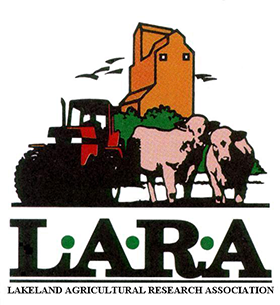Water Testing
Did you know an average cow drinks 40 to 60 liters of water per day? Clean water, then, is extremely important to the health of livestock. Clean water means cattle drink more, which means they eat more, which means higher profits from healthier, heavier animals.
By providing access to a clean watering source to cattle, weight gain has shown to increase by over 23% in yearlings.
Research has shown that when cows have the option to drink from a trough or from an un-fenced creek, 80% of the cattle will use the trough. Trough water is generally cleaner and cows know it.
Read more a bout water quality and importance of testing your water
Water testing is crucial to ensure your water is protected, appealing to your cattle, and safe to drink. Over time, land use changes, storm events, contaminant storage issues, and structural degradation of an aging well (or dugout) can affect water quality.
Testing your water on a regular basis provides a baseline of water quality. If things go wrong, you can go back and compare current water quality with your baseline. This standard is important information to have on hand if, for example, another party’s actions negatively affect your water source. Without it, there’s no way to prove damage has been done.
The importance of clean water for your health
Knowing what’s in your water is vital for your health and wellbeing. Contaminants can enter your water source and negatively impact your health and the health of your family. Nitrates, for example, can indicate nutrients (fertilizer, manure, and/or sewage) have entered your water. These nutrients can be fatal to infants, the elderly, or people with chronic illness.
Coliforms (fecal) in your water may indicate that human or animal waste has entered your water source, making it undrinkable.
Arsenic has become a prominent issue in Northern Alberta. Many of the wells tested in the Lakeland region have come back positive for the heavy metal.
Arsenic has two forms: 1) organic (arsenate, or arsenic (+5)) which is found in plants, animals, and some foods, and 2) inorganic (arsenite, also called or arsenic (+3)) that is found in water, soil, and air. Arsenic in drinking water can be attributed to both natural sources and human activity. Northeastern Alberta has high arsenic levels in the groundwater thought to be caused by local bedrock. The rock is known to contain pyrites enriched with arsenic.
Inorganic arsenic (arsenic (+3)) is more toxic than organic arsenic (arsenic (+5)). The former is more prevalent in groundwater as well due to low oxygen levels. In the Beaver River area, for example, arsenic (+3) is approximately ten times more prevalent than arsenic (+5).
Generally, we become exposed to low levels of organic arsenic through our food; this form of arsenic can be metabolized by the body and excreted in the urine. The arsenic found in the groundwater, however, is more toxic and can’t as easily be managed by the body. Arsenic (+3) can affect the gastrointestinal system, cardiovascular system, and nervous system.
The maximum acceptable concentration (MAC) of arsenic (+3) in water is 0.01mg/litre.
Water Testing & Decontamination
It’s important to test your well water on a regular basis to ensure it hasn’t become contaminated with arsenic (+3). Water treatments are available to reduce the amount of arsenic (+3) in water. Other treatments use oxidation to change arsenic (+3) into arsenic (+5). Reverse osmosis combined with a pre-treatment can remove the majority (roughly 85%) of arsenic from your water.
Distillation is also an effective decontamination method however it involves more maintenance and upkeep, and compliance with NSF/ANSI standards.
Conducting pre- and post-treatment analyses is the only way to prove the effectiveness of any system.
For more information on the mineralogy of arsenic and uranium, click here.
Well Testing
Alberta Health Services in partnership with the Beaver River Watershed Alliance have been gathering information and testing local Lakeland wells for several years.
To view the full report on the Drinking Water Quality and Human Health Assessment, click here.
Ways to Protect Your Water Source:
- Attend a Working Well Workshop
- Maintain your well (clean, shock chlorinate, and test your water)
- Attend a Septic Workshop
- Attend a Water Treatment Workshop
- Attend a Dugout Workshop and monitor your dugout for changes in structure and water quality
- Test your Water! It’s cheap and easy to do through your Alberta Health Unit. Click here for times and locations.
- Review your water analysis and understand it with The Rural Water Quality Information Tool
- Talk to Alberta Health Services about having your water tested for heavy metals, especially arsenic, which can be done in the Lakeland area at a reduced cost due to naturally high levels.
For more information on arsenic, visit the AHS website and their FAQs page

